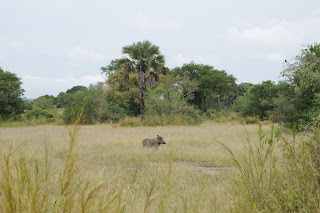


I get a call from Craig Andrews, my Task Team Leader for a project in Nigeria. Well, THAT project is on hold until after the elections. Don't I want to do a quick mission in Afghanistan? Why not, anything, even Afghanistan to change the scenery of Juba. I get there after I offer myself a treat, a day in Dubai.
Kabul…An interesting city, struggling between its tortured history and the desire to become modern. It is also struggling between trying to approach normality and the overwhelming presence of security concerns or relics of the Taliban past: armored cars, armed military and civilian personnel, in incredible numbers, the ruins of buildings destroyed by war or Taliban fury, and the WALLS. The walls in Kabul are no ordinary Walls, separating properties from each other and from the streets. They are fortress walls, made of huge sand bags, aimed to stop blasts, shrapnel or bullets, suicide cars, you name it. The poor city is trying to become normal…it is partly succeeding: there are shops and restaurants doing a flourishing business…there is a huge traffic problem, with road blockages of hours sometimes…
The project I work on is interesting: a huge copper mine, in Aynak, to be developed by the Chinese, and whose benefits for Afghanistan would allow it to finance its security and development for quite a while. The Government wants to develop the mine the right way because of future mining and other economic ventures where they want good investors to come in. So they ask the Bank how to communicate about it. The question is in fact how to manage the risks associated. And this is where I come in.
The Aynak site is just great! About 40 km South of Kabul, on the Logar Valley, it was first discovered by Buddhists monks which used to mine the deposit until the 5th century. It was re-discovered by the Russians in the 70's which started some sort of mining camp there used to house the exploration miners. After the Russians left, the place was taken over by Al –Qaeda as a training base. It is probably the place which gives Al-Qaeda (The Base) its name. The villages around the valley are empty of men. It is believed these were all Al –Qaeda members, which have started families here. And the whole area is known to have an increased level of "activity" compared with the rest of the region.
The big issue here are the Buddhist temples, on the footprint of the mine, and which need to be excavated and moved as much as possible, to a museum. And of course , the jackals are here, smelling blood and a good slanderous article. Here on the Aynak site the security remains the concern number one. The 'defenses' nearly remind us tautologically that the Chinese ARE the authors of the Chinese walls as you will see in the pictures…But also that he Buddhist temple and the finds here are remarkable and that this strong security also guards the site from looting.
In the ten days I spent in Afghanistan, whether in Kabul or on the site I never felt threatened. But then, people that get in trouble seldom do…














